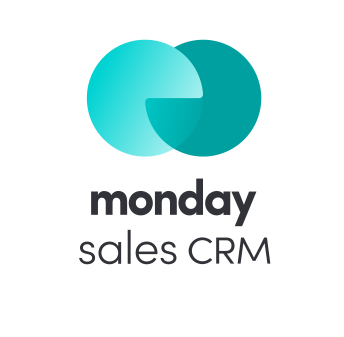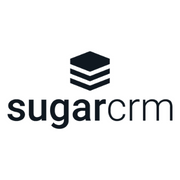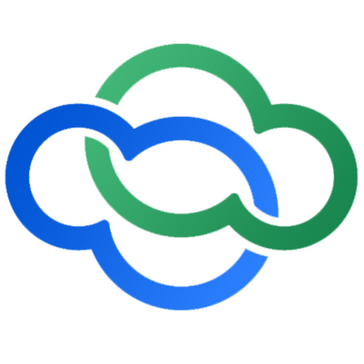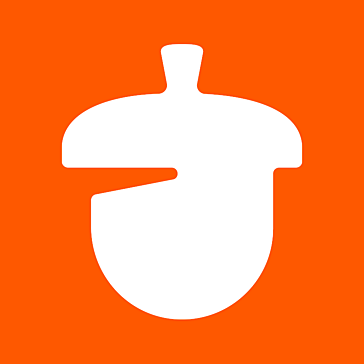Collaborative CRM Software Buyer's Guide
Table of Contents
» What is Collaborative CRM software?
CRM was used to manage leads and contacts for your company. It was limited to contacts and targets, with little interaction between them. Now, companies are turning towards social media and collaboration software to enhance their CRM tactics. Many software companies are adding collaborative tools into their products to integrate the two.
Collaborative CRM software, also known as customer relationship management software, is a service or application that facilitates the process of business interactions. This often includes task management, contact management, and team collaboration. Collaborative CRM Software is an application that facilitates business interactions for teams of all sizes. Their functionality typically includes tasks, contacts, notes, and team collaboration but does not apply to enterprise-level products.
Collaborative CRM software is a more specific type of customer relationship management system. It differs from CRM because it focuses on collaboration between team members in addition to other features. A simple way to differentiate between the two is that collaborative CRM software is designed with teams in mind and features dashboards, email, and other tools more email than a non-CRM system.
Collaborative CRM software is usually used by businesses that want to improve the speed with which they complete tasks and consolidate notes related to them. An example of such a business would be a real estate agency.
Additionally, you'll be better equipped to handle clients over the phone or email by implementing a collaborative CRM strategy into your business plan. Through this system, you can also email customer feedback and comments. Understanding the benefits of using a collaborative CRM system when starting your business is essential. Before going forward, we will take a look at features.
» Features of Collaborative CRM Software
Collaborative CRM software offers an enhanced customer service experience than traditional CRM systems. It is unlikely that a customer will need to be hand-held through a phone or in-store interaction, which often leads to frustration for both the company and the customer. Collaborative CRM has created new ways for companies to deliver more personal and customized support, which is more accessible, faster, and more cost-efficient than other options. The leading collaborative CRM solutions are Salesforce, Microsoft Dynamics 365, SAP Hybris Cloud Service Desk, Oracle Eloqua Customer Experience Platform & TrustNet. Here are some basic features CRM should have.
› Accessibility:
This is an essential feature to consider. A customer who cannot access or use the CRM software will have no means of communication or interaction with your company. Making the software accessible and compatible with all web browsers, smartphones, tablets, and computers will make it easy for customers to receive services and interactions from your company.
› Lead generation:
This is yet another essential feature of any CRM software. Making it easy to capture details and track such information is a critical factor in managing customer relationships. If a customer provides your business with their contact information, you should be able to add that info to the CRM and follow up with them. In case the customer offers some service or product information, which interests you, you can utilize an auto-responder feature to reach out.
› Pipeline management:
Having the ability to manage your sales pipeline is also vital in improving customer relationships and experience handling multiple interactions at once. Automatic reminders, email alerts on new exchanges and opportunities, quotation history, and other such information are crucial to keeping your sales team prepared for the next stage.
› Contact management:
Tracking all customer contact history by date, for example, is an essential feature of any CRM software. You should be able to see the full details of all your interactions with that customer, along with their location and preferred method of contact. It is vital to view this information and store it so it can be retrieved later.
› Calendar management:
Managing the information related to meetings and deadlines is an essential feature of any CRM software. The ability to store all meeting details in a calendar-type view will help you be more prepared for these events, especially if your company has multiple offices and work locations.
› Database management:
The CRM database is an essential feature for any company, allowing for data to be stored, managed, and retrieved via an organized structure. Collaborative CRM should be able to sort through all of this information and can be very useful in maintaining a reliable track record or overview of what customers are saying about your products or services to better prepare for future interactions.
› Chats and feeds:
This is a very important, sometimes overlooked, feature of any CRM software. The ability to communicate easily with these people without requesting information can be very convenient for your business.
› Email integration:
Email is an effective communication method, whether with clients or customers. The ability to send regular emails when new offers come in/when a client buys from you helps keep your clients up-to-date on what's happening.
› Activity timeline:
Keeping track of when an interaction takes place is essential, especially when other people are involved, such as sales team members, partners, or clients. Viewing an activity timeline is easy and very convenient, especially if the CRM software allows you to see where in the process a client was and what they're currently doing.
› Sales automation:
The sales team should be able to have a more effective way of managing leads and tracking their pipeline into opportunities and sales. Automation features can sometimes allow your employees to be more productive by dealing with interactions faster and more effectively than if they were manually dealing with them one by one.
› Third-party integration:
You should be able to integrate your CRM software with several other applications, allowing for more ways to manage and track your customer relationships. Being able to easily integrate with your email marketing platform, accounting software, HR system, and more will allow you to take advantage of more features and use those tools more efficiently.
Let's understand what are the major benefits of Collaborative CRM Software. Hope it will be helpful.
» Benefits of Collaborative CRM Software
› Cuts down customer service costs:
In a collaborative CRM system, team members can share notes through email, tasks through Google Docs, or solutions via Slack or Basecamp. They can also create and track task lists, including attachments, and share documents with the project's stakeholders. With each project having its views, it is possible to keep track of individual teams' workflows. This is useful, especially in a service business where different departments may have unique processes:
› Focuses on outcomes:
In a traditional CRM system, all contacts are registered in one place (contact history). In the case of e-commerce businesses, it may include records for anonymous users who might not even be customers. Collaborative CRM software allows teams to focus on what's most important: the outcome. This approach makes it possible to limit unnecessary tasks and respond more quickly to customers.
› Saves time:
In a traditional organization, contact history must be transferred from one staff member to another. When the contact information changes, it is added or altered by several people in different departments, making updates more difficult. Employees on different teams often need to communicate with each other when working on a single project. With collaborative CRM software, team members can cater directly (being part of the same project) and collaborate in real-time.
› Reduces the threshold for project management:
A traditional CRM system may be linked to information other than clients: product specifications, systems, software, or databases. Collaborative CRM software allows team members to share information solely on projects with one another and report on their progress. It also makes it easy for them to request support from the service's executive director when needed. A collaborative CRM system allows teams to work on a unified project without involving other departments.
› Allows you to assign different ownership:
A traditional CRM system may be organized with one person in mind as the leader. In the case of collaborative CRM software, team members can each have a specific responsibility and style of work. Co-ownership has long been known to increase motivation and productivity by allowing employees to experience the direct benefits of their efforts. This is also true for collaborative CRM software, as each team member can contribute to their tasks, tracking and reporting on them daily based on personal preferences and experiences.
› Reduces staff costs:
As with any business, the company must maintain costs reasonably while maximizing productivity. A traditional CRM system might include features that are not necessary for some businesses to employ, such as a call center. Collaborative CRM software is more cost-effective as it can be customized to fit the company's specific needs.
› Improves communication with clients:
Nowadays, many companies use social media to communicate with their customers. Collaborative CRM software allows team members to share news and company updates with clients via the same platform they use to manage the project. In this way, teams can improve their client service while creating a direct line of communication between them and the department handling the project.
» How to Choose the Best Collaborative CRM Software?
A good collaborative CRM has many great features that will help your team work more efficiently and make them much happier. But what are these features? And how can you tell if they're suitable for your company? Well, we're glad you asked! Read on to learn more.
1) A good collaborative CRM usually lets users with it using a web browser, meaning they don't need to download any software. All of the data is stored in the cloud, making access easier and synchronizing data more accessible across multiple devices easy. The best collaborative CRMs are usually web-based and easy to set up. They give users access to the CRM via a web browser, where no installation or programming is needed. In addition, users can be assured that their data will be secure and backed up in the cloud so they can always access it from anywhere with an internet connection.
2) You may have heard about companies offering better collaborative features through their "CRM platform," but such platforms often require significant investments in infrastructure, maintenance, and support. The best collaborative CRM software is usually hosted as a service (SAAS), which means that you only need to pay for what you need when you need it, and no servers to maintain or backups are required.
3) A good collaborative CRM will help you build better customer relationships by keeping your client or customer data in one easy-to-find place. Your customer information will be easy to find, regardless of where it came from or who added it to the database. This also means that you can quickly search your database and find any contact information when needed.
4) A good collaborative CRM will also let you track all the different interactions between your clients and their customers, which means that you'll be able to better track issues, complaints, and other customer inquiries. This feature allows you to easily manage the various stages of your customer's relationship with your company, from initial contact through repeat purchases.
» How much does Collaborative CRM software Cost?
Collaborative CRM software is not a cheap proposition. That said, it can save your business a lot of money in the long term and make you more productive. The cost will vary depending on how much time you spend on administrative tasks or what sales your organization pulls in.
Suppose you're spending thousands of dollars per year on marketing and sales. In that case, you need to consider a collaborative CRM solution that will help manage all the different documents, tasks, emails, and websites in your organization.
You can purchase off-the-shelf CRM tools with team collaboration for a few hundred dollars. Your seat will cost around $50-$100 per month – depending on which version you choose. You can also choose to pay-as-you-go with a similar software package. Additionally, renewing your annual license or purchasing a new one yearly will typically be between $1,00-$1,200.
» Conclusion
With collaborative CRM software, it's easier to find out who the best contacts are, who to connect with, and who you want to exclude. With the best CRM software with team collaboration, you can keep track of your entire sales funnel, from the top of the funnel (prospecting leads) down the middle of the funnel (leads), and then filter out all the people that don't meet your criteria (tips). With collaborative CRM software, it is easier for your team members to access real-time data. It also gives them a way to be proactive in changing their business results by using data they see as a result of their actions. So make sure that you choose the best collaborative CRM software.




















